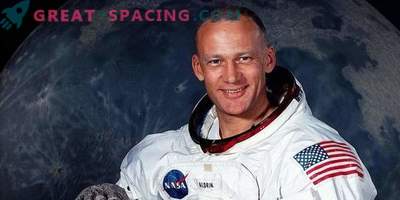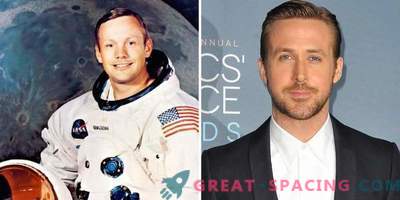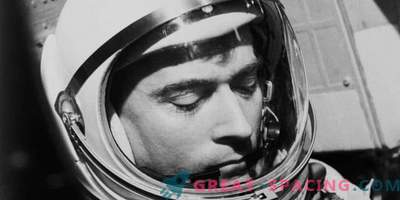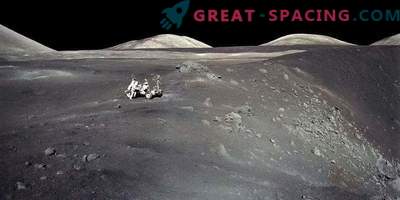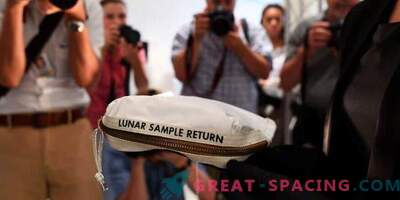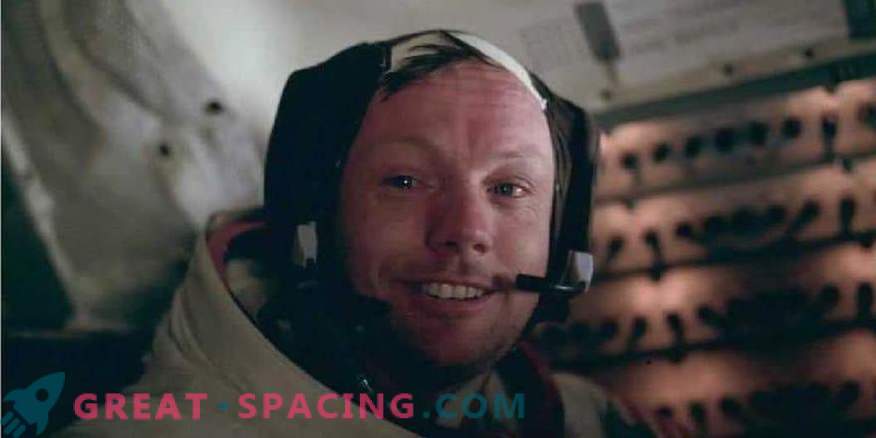
Neil Armstrong is sitting in a lunar module after a historic moon walk.
NASA astronaut Neil Armstrong became a well-known agency employee for the fact that on July 20, 1969, he first stepped onto the surface of the moon. In 1966 he participated as a pilot in the Gemini-8 mission. He left NASA in 1971 and remained active in the aerospace community, although he tried to stay away from public attention. He died on August 25, 2012 at the age of 82.
Armstrong was committed to teamwork, so he focused on the team that helped get to the Moon, rather than the first steps. For example, in one interview he was asked: “How does it feel to understand that your footprints will remain on the Moon for a thousand years?”. Armstrong replied to this: “It would be nice if someone happens to be there the other day and sweeps them away.”
The official biography was published in 2005 under the title “First person: the life of Neil Armstrong”. The author was James R. Hansen, a former NASA historian and professor of history at Auburn University.
Early career and work at NASA
Neil Armstrong was born in Wapakoneta, Ohio on August 5, 1930. His parents are Stephen Armstrong and Viola Armstrong. In 1949-1952 was a naval aviator and participated in the Korean War. In 1955, he received a bachelor of science degree in aeronautical engineering from Purdue University. In 1970, he received a master's degree in aerospace engineering from the University of Southern California. As an experimental pilot, NASA Armstrong launched on the X-15 rocket. In total, he tested as a pilot more than 200 different aircraft.
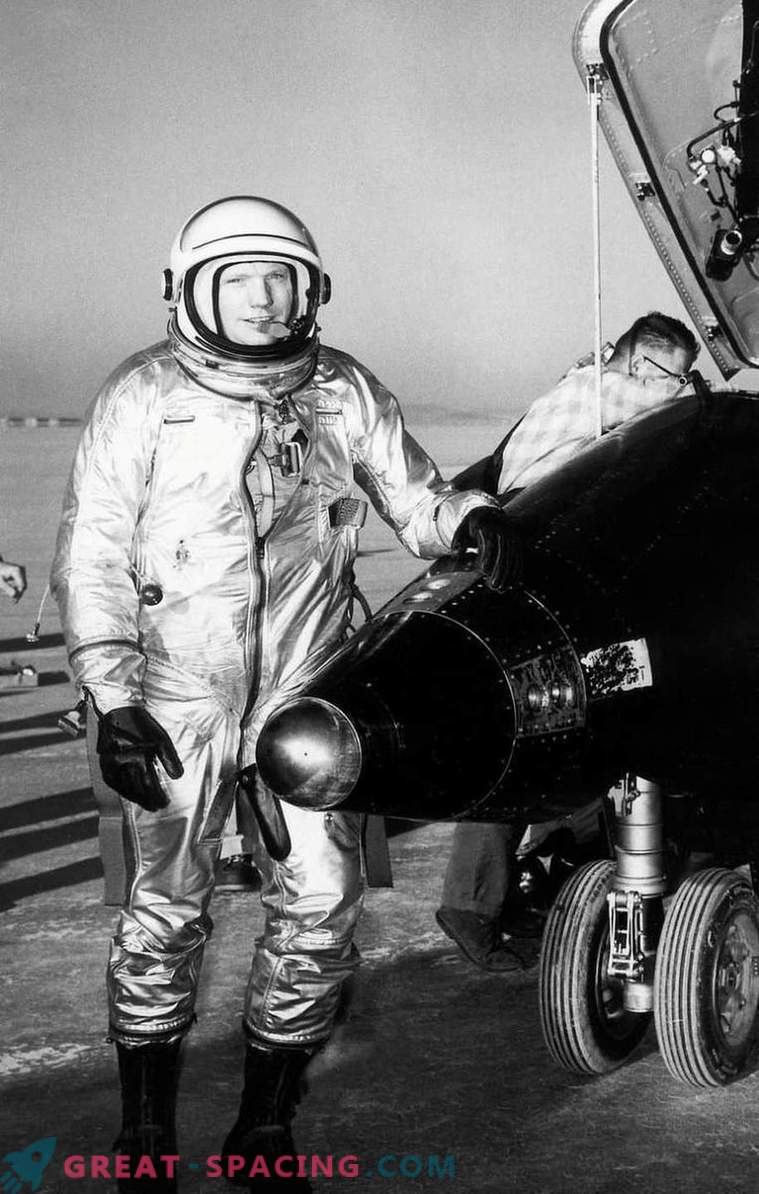
Experimental pilot Neil Armstrong near the X-15 ship
In 1962, he was selected to the second group of NASA astronauts, who went to the flight of the Gemini two-seat mission to test space technology, and the Apollo three-seater, which eventually managed to deliver 12 people to the moon. The first flight for the Nile was the mission of Gemini in March 1966, where he acted as a command pilot in a company of 6 crew members.
Armstrong and David Scott conducted the first orbital docking of two spacecraft, attaching Gemini-8 to the Agen spacecraft. But they were faced with an emergency when Gemini-8's steering gear jammed. Armstrong was able to regain control using the re-entry engines. As a result, the situation ended well.
In May 1968 Armstrong was lucky again. He ran a research aircraft for testing lunar landings. The fuel ran out and Neil had to jump a few seconds before the ship crashed.
Apollo 11 and the first step to the moon
In January 1969, NASA for the first time officially announced the selection of the crew of the Apollo 11 mission. They decided to take the veterans: Neil Armstrong (Gemini-8), Buzz Aldrin (Gemini-12) and Michael Collins (Gemini-10). Armstrong entrusted the management of the mission. He needed to land on the moon with Aldrin. Collins remained on the orbital ship. The crew members were not sure that they would be the first people on the moon. NASA had a clear plan, where each mission was test and preparatory to the final descent. Therefore, Apollo 11 was supposed to be ready for planting, but no one knew if it would work out. Apollo 11 was launched from Cape Canaveral (Florida), accompanied by crowds of people watching the launch on July 16, 1969. The crew traveled to the Moon in 4 days, and on July 20 there was a disconnection and landing. At the time of descent, the astronauts saw the landmarks below and reported to the command post that they would descend a few miles from the planned landing zone. As a result, the computer of the lunar module displayed several alarms, as it was loaded with tasks and needed overloading. Later it turned out that one of the switches was in the wrong position and the signals were false.
Armstrong had to plant the device manually when he noticed that they were falling on boulders. At the time of landing, the crew had only 25 seconds of fuel. Armstrong said: “Houston, we touched the surface. The eagle has landed. ” The astronauts followed a clear schedule, so they had to sleep before the first walk. But no one could tolerate. Having connected a black and white camera transmitting signals to the Earth, Armstrong stepped onto the surface at 22:56 on July 20, saying the famous phrase: "This is one small step for a man and a huge leap for humanity."
Armstrong and Aldrin together examined the surface for 2 hours and 36 minutes. They extracted 22 kg of material, including 50 lunar rocks, and also launched experiments, set the American flag, and talked with President Richard Nixon for a minute. The team successfully launched on June 21, docking with the orbital ship and went to Earth to land on July 24. The first time they spent in quarantine to make sure there were no dangerous bacteria, and then went on a world tour.
After Apollo 11 and the death of Armstrong
After his astronaut career, Armstrong was the deputy assistant administrator of aeronautics at NASA headquarters. In 1971 he left the agency. In 1971-1979 worked as a professor of aerospace engineering at the University of Cincinnati. In 1982-1992 was chairman of Computing Technologies for Aviation in Charlottesville, Virginia. He was also a member of the commission that investigated the shuttle crash in 1986 and the death of 7 astronauts.
Armstrong tried to keep a low profile after leaving NASA, although he occasionally gave interviews and appeared in public in honor of the anniversary events of Apollo 11. He did not give a lot of public statements, but always followed the space news and sometimes commented on what was happening. He actively criticized NASA's plans to move flights to private ships.
On August 7, 2012 (2 days after the 82nd anniversary), the famous lunar walker underwent coronary bypass surgery. Complications ended in death on August 25th. Many famous people have publicly expressed their grief (Barack Obama, Charles Bolden, Buzz Aldrin, Michael Collins, etc.).
Private memorial service was held on August 31, 2012 in Cincinnati. Two weeks later, they held a public television memorial service in Washington. Armstrong was buried at sea on September 14, 2012. A family attended on board the ship when its ashes were scattered in the waters of the Atlantic Ocean.
Armstrong's Legacy
It turns out that Armstrong had kept a bag with parts from the lunar module in his house. They have not been seen for decades before the widow Carol was found. And this bag was discussed for a long time, but Armstrong never mentioned it in an interview. It is not known how he managed to seize these details, but the Apollo crew members often kept certain souvenirs from the missions for themselves. The Columbia spacecraft was exhibited at the Smithsonian National Air and Space Museum (Washington, DC) from 1976-2016. in the main hall is a museum. Then it was removed for recovery. We have now begun to upgrade the hall itself to open a new gallery dedicated to the lunar mission. In the BBC documentary, Neil Dean's brother said that the first famous words were invented by Armstrong beforehand, although in all interviews the astronaut denied this point. Other Apollo 11 astronauts also supported Neal in this regard.
In 2017, a rare gold model of the lunar module was stolen from the Armstrong Museum in Wapakoneta (Ohio). In 2018, we will again recall the exploits of Neil Armstrog, as a feature film comes out, based on the biographical book “The First Man: The Life of Neil Armstrong,” where the main role went to Ryan Gosling.


